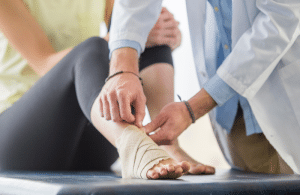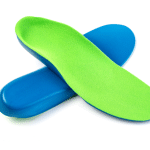Adelaide Podiatrists Discuss 6 Common Netball Injuries
Netball involves a lot of running, jumping, and sudden changes of direction, which can put a lot of stress on the feet. This stress can lead to injuries of the foot & ankle. Here are the TOP SIX netball injuries of the foot & ankle:

1. Plantar Fasciitis: Plantar Fasciitis is a common injury in netball that occurs when the plantar fascia, a thick band of tissue that runs along the bottom of the foot, becomes inflamed. This can cause pain in the heel or arch of the foot, particularly in the morning or after long periods of standing or walking.
2. Ankle Sprains: Sprained ankles are also a common foot injury in netball. They occur when the ligaments around the ankle joint are stretched or torn, usually as a result of a sudden twisting motion.
3. Achilles Tendonitis: Achilles tendonitis is an overuse injury that occurs when the Achilles tendon, which connects the calf muscles to the heel bone, becomes inflamed. It can be caused by repetitive jumping and landing
4. Bursitis: Bursitis is a condition that causes pain in the ball of the foot. It is often caused by repetitive impact on the foot, such as jumping and landing, and can be exacerbated by wearing shoes that do not provide adequate support.
5. Sesamoiditis: Sesamoiditis is an overuse injury that affects the sesamoid bones in the ball of the foot. It is often caused by repetitive impact on the foot, such as jumping and landing, and can cause pain and swelling in the ball of the foot.
6. Blisters and Calluses: Blisters and calluses are common foot injuries in netball that can be caused by friction and pressure from running and jumping. They can be prevented by wearing properly fitted shoes and socks and by using protective padding.
Looking for management of netball injuries by experienced Adelaide Podiatrists?
Book online by clicking HERE or call 8333 2022 (Burnside) or 8445 8680 (Woodville)
Prevention of Netball Injuries

- Wear appropriate footwear: Properly fitted shoes with good support and cushioning can help to reduce the risk of foot and ankle injuries. Netball shoes should have a non-slip sole, good ankle support, and a secure fit. A “netball” specific sneaker is the ideal shoe.
- Warm-up and cool down: A proper warm-up and cool-down routine can help to prevent injuries by preparing the muscles and joints for activity and reducing stiffness and soreness after exercise.
- Strengthening exercises: Strengthening exercises for the feet and ankles can help to improve stability and reduce the risk of injury. Podiatrists can provide specific exercises tailored to an individual’s needs.

- Orthotic support: Custom orthotic devices can be prescribed to reduce stress on the foot & ankle & reduce the risk of injury.
- Gait analysis: A podiatrist can perform a gait analysis to assess an individual’s foot, ankle & lower limb mechanics and identify any issues that may increase the risk of injury. They can then provide recommendations for reducing the risk of injury.
- Rest and recovery: It is important to allow adequate time for rest and recovery after activity to prevent overuse injuries and ensure proper healing of any injuries that do occur.
By following these tips and working with our Podiatrists at Healthy Life Foot Clinic, netball players can reduce the risk of foot and ankle injuries and enjoy a safer and more successful sport season.
